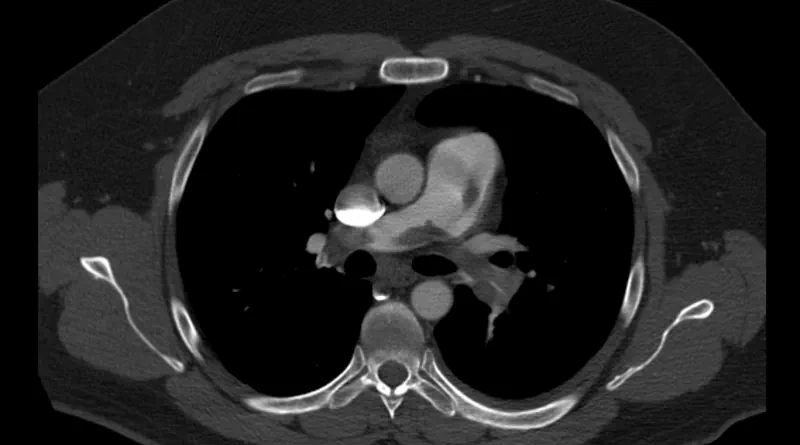Pulmonary Embolism Symptoms
A pulmonary embolism is a blood clot in the lungs. These clots can cause a range of symptoms. Sometimes, people will have a pulmonary embolism, but have no symptoms at all. But other times the clot might cause very severe symptoms and even lead to death.
Common Pulmonary Embolism Symptoms
Most people with a pulmonary embolism will experience shortness of breath. Chest pain is also common. The most common type of chest pain is pleuritic. This means it might hurt to breath. People usually describe a sharp, stabbing pain in their chest.
The next most common symptoms is a racing heart beat. People might feel their heart beat. That is called palpitations. If you try to measure their heart rate, you might notice it is quicker than normal. Perhaps it will be quicker than 100 beats per minute.
Serious Pulmonary Embolism Symptoms
Sometimes a pulmonary embolism blocks the blood flow from the heart to the lungs. This will cause the heart to struggle. If this happens the blood pressure might drop. When the blockage is most significant a person might even die because blood will not be able to circulate in the body. This type of clot is called a massive pulmonary embolism. It is a medical emergency because a person might deteriorate very rapidly.
Different People have Different Symptoms
So why do different people have different symptoms? You might be surprised, but it has to do with more than the clot itself. It is not enough to see a large clot, or a clot in a major pulmonary artery to know that they have serious symptoms. In fact, a person might have a very large clot lodged in their heart or in the main artery in the lungs and not even know about it.
Serious symptoms usually happen when a significant clot meets a particular person. Sometimes serious symptoms will happen when the body reacts aggressively to the clot. Other times serious symptoms will occur when a clot blocks blood flow in a person with very few reserves. Basically, this means that the same clot in someone else might not have been as bad.
Putting It All Together
So, when we assess pulmonary embolism symptoms we must go beyond the pictures. We should always look at the patient. We need to look at how hard they are working to breath, at their oxygen levels and at their blood pressure. When possible, we should also try to obtain some more sophisticated information. For instance, special blood tests can help us assess how bad the heart is impacted. Also, we should get a heart ultrasound to look at the heart function. Only by putting all this together, we will get the full picture and be able to tailor treatment to help a patient properly.




Pingback: Pulmonary Embolism: Symptoms, Diagnosis, Treatment